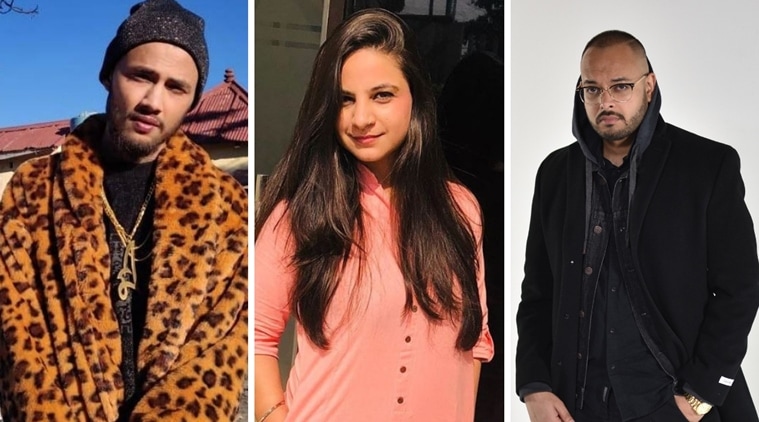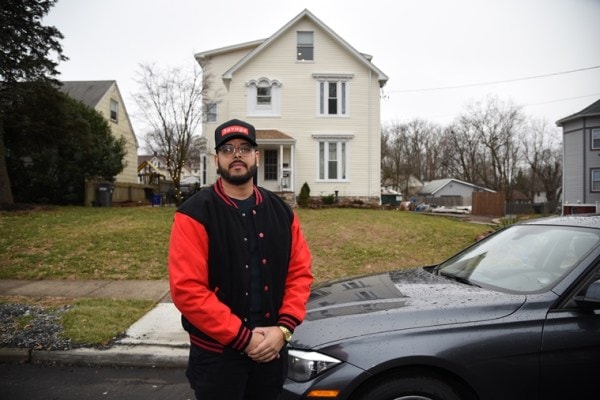
These East Delhi gullies regularly jive to rhythmic sounds and throbbing beats. A bunch of boys recite their verses, diss each other and jam away as a part of their regular cypher. “Jamnapaar has become a hub of rappers, there’s one in every second household,” says Aamir Kunwar, who in 2016 started Artisttaan, a label for independent rap artistes.
Just like DIVINE and Naezy in Mumbai, the inspiration behind Zoya Akhtar’s Gully Boy, underground rappers are spread out all across Delhi, all of them excited about the movie. “The real hip-hop artistes will get recognition,” they believe.
Coming from a small locality in East Delhi, 23-year-old Ravi Mishra, popularly known as Raga, is trying to make it big on the commercial scene. An underground rapper since 2012, Raga got associated with Artisttaan when it started. Their first song, Jamnapaar, which described the life past the Yamuna river in Delhi, became an instant hit. “Badshah and Raftaar also shared it and after that, the hip-hop scene in Delhi got a boom,” says Kunwar, whose label was signed by Sony Music in November last year.
Raga, who was formerly known as Ewill Myth, still considers the underground culture his love. “I could express myself freely, but money was the biggest problem, even winning a rap battle would give me a meagre Rs 5,000.” With their deal with Sony, money issues have been resolved.
Underground rap has become synonymous with writing about life in the gully and the struggles of growing up in a neglected area. “You listen to your parents at home and your girlfriend outside. An underground artiste knows his songs never reach his parents, so he sings openly,” Raga says.
Prabh Deep from West Delhi’s Tilak Nagar also writes about the kids being engraved in drugs and about his life in the streets. The 23-year-old was the first to breakout in Delhi.
While some of them come from the gullies, Delhi continues to break the stereotype that a good rapper only comes from the marginalised sections. In 2014, when Krishna Kaul (Krsna) released his first commercial album, he called it ‘Sellout’, because he knew that’s what people will call him. “I might have seven times more reach, but hip-hop lovers consider it not being true to the art,” he says. Coming from Gurgaon, the 28-year-old has been rapping for over 12 years but only considered making money from it five years ago.
Formerly known as Prozpekt, his socio-political songs ‘Kaisa Mera Desh’ and ‘Lokpal’ were immensely popular. “When you go commercial, you have to dumb down a little. No one wants to listen to deep, meaningful lyrics in a club.” Kaul stars in Gully Boy and is busy promoting it. He also releases independent songs regularly.
With a dream to make money from their art, most underground artistes think of going commercial. However, Prashant Verma, popularly known as Slyck Twoshadez, continues to work as an independent artist despite being in the industry for over a decade. “It’s not that I didn’t try going commercial, but I just could not make my music the commercial way. It’s a completely different industry,” he says.
A pharmacist in the US, Slyck started taking his music more seriously only a few years ago. Although he does not get as much as he invests in his music, he is able to make a good amount. “Internet has made it easy for independent artistes. The labels are no more the middlemen and the artistes are able to make money through live shows and directly from music streaming platforms like iTunes, YouTube, Saavn.”

Although it is only recently the hip-hop industry in India is getting the visibility it deserves, it has been operating in Delhi for more than a decade. Before YouTube gained popularity, artistes used to record on phones and share via Bluetooth and rap battles used to happen on Orkut. “It was very common to diss one another in a war of words online,” Slyck says. Over a decade ago, Slyck along with DJ Karma was organising hip-hop events in Hauz Khas. Now collectives such as Spit Dope and Underground Music League organise them regularly and upload the videos on YouTube, giving budding artistes the exposure. Hip-hop nights have also become very common in restro-bars like Raasta.
Even as the craze around hip-hop rises, the female voice is clearly missing. Although a few female rappers are emerging in Delhi, spotting one in a cypher is equally hard. “Rap industry is a male-dominated industry because we let them dominate,” says Ratan Kaur, who goes by the stage name Kauratan. Her first song, ‘invasion’, was released by Desi Hip Hop in 2015 and she is in the process of releasing some commercial songs. “People in the industry were so helpful and encouraging. I do not go to any events or gigs, because I am trying to make a demand for myself first,” the Punjabi rapper says.
Contrary to Kauratan’s experience, 22-year-old Ishita Kaur has seen the dark side of the industry. “Everything happens in brotherhood. I get charged more for production because I am a woman,” she says. Kaur has her own fashion label and invests the money she makes into her songs. She approximately spends anywhere between Rs 20,000 and Rs 2 lakh per song with no tangible returns. “Now people don’t ask for a sexist song, but they do ask for a sexy body.” Being on the heavier side, she has lost some commercial songs. “Even Badshah is on the heavier side, this does not happen with him,” she says.
While the underground rap scene in Delhi is widespread, 23-year-old Yawar Naseem, who is also associated with Astisttaan, describes it as ‘fire’. “There is a spark in each one of them,” he says. While he mentions how some people make controversial songs to go viral, it has been changing over the years. “It is a quick way to fame, but most artists are very mature and expressing their emotions,” he says.